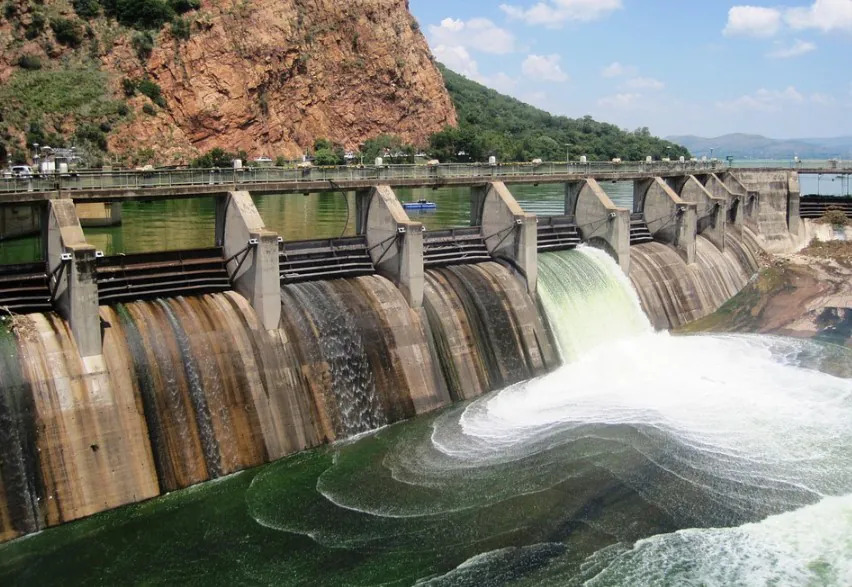According to the Markets and Data Research report, “Global Hydropower Market Assessment, By Region, Opportunities and Forecast, 2017–2031F”, global hydropower market will witness a net addition of 22.77 GW. It will increase to a net addition of 27.18 GW in 2030, growing at a CAGR of 2.24%.
Hydroelectric power is a renewable energy source that has been used for ages. The market is driven by rising demand for clean and sustainable energy, energy security concerns, and attempts to reduce greenhouse gas emissions. Hydropower has several advantages, including great energy efficiency, dependability, and the capacity to store energy during peak demand. The market is divided into three segments, i.e., large hydropower, small hydropower, and micro hydropower. Small hydropower refers to the installations of up to 100 kW, whereas major hydropower plants surpass 10 MW. Pumped storage hydropower generates energy by storing and releasing water at peak demand. Hydropower development differs by area.
Report Link: https://www.marketsandata.com/industry-reports/hydropower-market
Large-scale hydroelectric dams are the major infrastructure projects that use the power of water to generate energy on a large scale. These dams are often built over rivers or other bodies of water to create reservoirs capable of storing significant volumes of water. The held water is subsequently released through turbines, which spin generators to create electricity. The dam itself is designed to impound water and create a reservoir. It is intended to withstand the pressure produced by stored water and regulate the release of water for power generation. The reservoir acts as a massive water storage system, providing a consistent water supply for energy generation. Furthermore, large hydroelectric dams provide various advantages.
They provide a consistent and predictable renewable energy source since the water flow can be controlled and altered in response to electrical demand. They help to ensure energy independence and security by lowering dependency on fossil fuel imports. Furthermore, these dams frequently provide additional benefits such as flood control, agricultural water supply, and leisure possibilities by creating reservoirs.
Spread through 125 pages, “Global Hydropower Market” report includes an in-depth TOC, over 230 market data figures, the latest market developments, key drivers, and opportunities, and a thorough study of major company profiles. Moreover, the report offers strategic recommendations, pricing analysis, market share analysis, and value chain analysis in detail.
Key Takeaways:
- The installation of a pumped storage hydropower facility is accelerating the overall market prospects.
- The government entities are spending a hefty amount towards the technological advancements of hydropower dams, which, in turn, is augmenting the overall market growth.
- Moreover, the introduction of small and medium-sized hydropower projects is influencing the market growth extensively.
Global hydropower market is segmented in the following categories:
By Type: Impoundment, Diversion, and Pumped Storage
By Size: Large Hydropower (Above 30 MW), Small Hydropower (between 100 kW to 10 MW), and Micro Hydropower (up to 100 kW)
By Components: Electromechanical Equipment, Electric Infrastructure, and Civil Works
By Sector: Public and Private
By End-user: Residential, Commercial, and Industrial
By Region: North America, Europe, Asia-Pacific, South America, and Middle East and Africa
Based on Size, the large scale hydropower projects are propelling the market growth. Large-scale hydropower projects are prevalent due to their significant capacity to generate electricity and their ability to meet high energy demands of countries like China and India. These projects involve the construction of large dams and reservoirs, harnessing substantial amounts of water flow to produce electricity efficiently. Large-scale hydropower plays a crucial role in global energy mix, contributing significantly to renewable energy generation.
In terms of region, Asia-Pacific dominate the market significantly in all the aspects due to its vast potential for hydropower generation, driven by countries, such as China and India, with significant hydropower capacity. The region’s focus on renewable energy sources, favorable geographic conditions, and government initiatives supporting hydropower development contribute to its leading position in the global hydropower market. Additionally, the increasing demand for clean energy and region’s commitment to reducing carbon emissions further boost the growth of hydropower in the region.
Press Release : https://www.marketsandata.com/press-release/hydropower-market
Major Companies Operating in Global Hydropower Market Include:
1. General Electric (GE) Renewable Energy
2. Voith Hydro
3. Andritz Hydro
4. Toshiba Energy Systems & Solutions Corporation
5. Bharat Heavy Electricals Limited (BHEL)
6. ABB Limited
7. National Hydro Electric Power Corporation (NHPC) Limited
8. RusHydro
9. Norconsult AS
10. Gilkes Energy Ltd
11. Tata Power Company Limited
12. Exelon Corporation
Organizations are investing a hefty sum of money towards developing hydropower projects to increase their revenue and stay competitive in the ever-changing market scenario.
In May 2023, GE was selected to deliver six power generating units for the 200 MW Chira Soria Pumped Storage project in Gran Canaria, Spain. The initiative, in consortium with Cobra Infrastructuras Hidráulicas, aims to stabilize the grid by acting as giant batteries, enhance renewable energy production by 37%, and reduce CO2 emissions by 20%. The project will increase the island’s renewable energy coverage to 51%, with an expected completion date in 2027 and an energy storage capacity of 3.5 GWh.
“Global Hydropower Market Assessment, 2017–2031F”, evaluates the future growth potential of global hydropower market and provides statistics and information on market size, structure, and future market growth. The market report includes a complete analysis of emerging trends, significant drivers, challenges, and opportunities in the hydropower sector, helping enterprises to understand market potential better and invest strategically. The report covers a wide range of topics, including regional dynamics, a detailed examination of the competitive landscape, market segmentation, applications, recent developments, and emerging trends, making it an invaluable resource for businesses seeking to navigate the volatile market landscape and capitalize on its

